Import JDM Cars from Japan
If you see a movie or hear a car from Japan, you probably marveled over the unique and wonderful Japanese Domestic Market (JDM) cars. Japan is known to be one of the biggest car hubs in the world.
What does JDM Mean? What is a JDM?
In the automotive industry, people refer to cars from Japan as ‘JDM’ cars or Japanese Domestic Market (JDM) cars. These vehicles are manufactured to suit the strict performance, emissions, and market requirements of the Japan. Anyone who has ever looked into this industry knows that the Japanese domestic market cars or JDM cars are among the best.
Most people are not aware of how JDM cars are different from other vehicles around the world. While many have an idea of how reliable these vehicles are, some do not understand the reliability tests that they are subjected to. In America, auto manufacturers test their own products, ensuring that they meet the federal requirements. The government then certifies the tests and results. On the other hand, there is a different process for auto testing in Japan.
The Japanese government is the one that performs the tests, ensuring that the auto manufacturers maintain the minimum requirements. They are strict when it comes to safety testing, and they do not leave it up to the automakers.

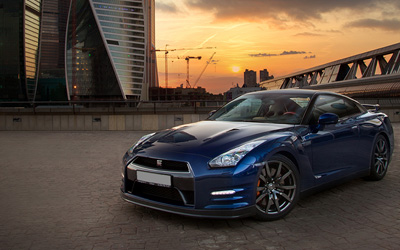
Popular JDMs Imported from Japan
While there are plenty of cheap JDM cars in the market, performance vehicles are what most people across the globe desire. They can be expensive, but it is not uncommon to find more affordable alternatives from a Japanese car auction. So, in this post, we are going to discuss some of the highly sought-after JDM imports in various countries around the world.
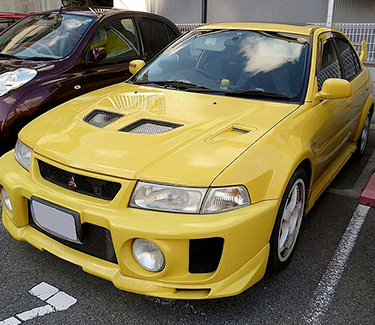
Mitsubishi Lancer Evolution V (CP9A)
The first generation of the Mitsubishi Lancer Evolution continued through Evo I, II, and III. In May 1996, the Japanese automaker took a major leap forward by performing a full-model change of the base Lancer sedan. This is when it introduced the second generation of the Evo series—the Lancer Evolution IV.
Mitsubishi flipped the 4G63’s mounting position around 180 degrees, increasing the output to 276 HP. The Evo IV boasts of a maximum torque of 260.3 ft-lb. Mitsubishi also introduced the electronically controlled AYC (Active Yaw Control), replacing the mechanical LSD in the rear differential of the older models.
The Evolution V had detail changes, including wider rear and front tracks, flared wheel arches, upgraded suspension geometry, bigger 17-inch wheels and tires, and an adjustable rear wing. While Japanese laws restricted the power output of the Evo V to 276 HP, many people know that it can be stretched beyond 300 HP.

Mitsubishi Lancer Evolution VI (CP9A)
The sixth iteration of the Lancer Evolution series, the Evo VI also had the CP94 Lancer chassis. Mitsubishi made a minor facelift to the Lancer Evo V and introduced the Evo VI in 1999. It is worth noting that this model is the first to have the license plate mount on the left-front corner of the vehicle. This design allows more air to flow to the intercooler. Other changes were made to increase airflow, including reducing the front fog lights in size and moving them to the corners of the bumper. Mitsubishi also made improved the engine and cooling reliability, enlarged the oil cooler and intercooler system, introduced new pistons, and added a new titanium-aluminide turbine wheel to the RS models.
All the Lancer EVO VI models had the Evo V’s 2.0-liter turbocharged inline-4 4G63T engine. Due to Japanese regulations, their power output was limited to 276 HP. Their engine can produce up to 275 ft/lb of torque.
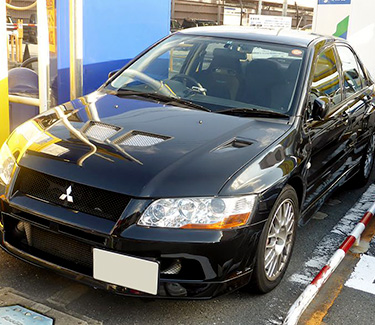
Mitsubishi Lancer Evolution VII (CT9A)
Sold from 1992 to 2016, the Mitsubishi Lancer Evolution VII was the seventh iteration of the Mitsubishi Lancer Evolution series. It was also the first to use the CT9A Lancer chassis. In 2001, the Japanese automaker performed its first major redesign on the model, basing it off the Lancer Cedia platform and giving it a heavier and larger body. It is also worth noting that during this time, Mitsubishi competed in the WRC instead of the Group A rallying. As such, the Evo VII did not need to meet homologation requirements.
The Lancer Evo VII models kept the Evo VI’s 2.0-liter turbocharged 4G63T inline-4 engine. The power output is still capped to 276 HP, but the model can now produce 284 ft/lb of torque. This model has a front helical LSD and it is the first Evo to have a chrome Mitsubishi logo in the grill.

Nissan Skyline (BNR32, ECR33, ER34)
When the Nissan Skyline GT-R was reintroduced in the BNR32 generation in 1989, it was designed to compete in the Group A racing. It features a 5-speed manual transmission and a 2.6-liter inline-6 engine twin-turbo RB26DETT engine that can produce 260 lb/ft of torque and 276 HP. These cars have cross-drilled brake rotors, larger Garrett turbos, and additional front bumper ducts. Nissan also improved the intercooler’s airflow by removing the lower grill mesh. Other changes included an aluminum hood, aluminum bumpers, removal of the rear wiper and the ABS, and weight saving measures.
When Nissan introduced the N1 model in 1991, the Japanese automaker opted for lightweight headlights, additional brake cooling ducts, and reinforced brake master cylinder. If you’re after the V-Spec model in a Japanese car auction, expect features like Brembo brakes, lightweight hood and bumpers, 17” BBS wheels, and the ATTESA E-TS system.
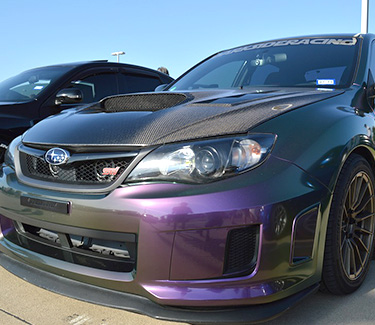
Subaru Impreza WRX STI (GDB)
Introduced in 2000 as the second-generation Subaru WRX, the GDA model kept GC8’s 5-speed manual transmission gearbox design. Later on, the Japanese auto manufacturer released the 6-speed gearbox for the STi GDB model, which is considerably stronger. It is worth noting that the STi and the WRX along with the GD chassis went through two styling changes. Nissan applied the original styling to A and B. Unfortunately, the design proved to be unpopular, prompting the company to use a more traditional style for the C, D, and E models.
There are three types of GDB, late-model Imprezas. Nissan gave the GDB-C an aerodynamic update and changed the shape of its front portion. The auto company also included a low, polished center-of-gravity chassis. Since the GDB is a rally-based vehicle, it can be difficult to achieve its maximum speed. Many consider it as a contemporary rival of the Lancer Evo IX MR.
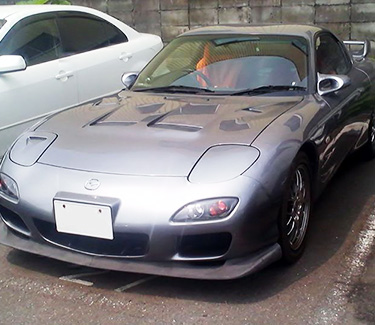
Mazda RX7
In 1985, Mazda introduced the FC3S generation of the RX-7. It is worth noting that all RX-7s had a 13B 1.5-liter rotary engine. Its non-turbo version can produce up to 146 HP and 138 lb/ft of torque. Meanwhile, the turbo version can render up to 182 HP and 181 l/ft of torque. Most Japan imports of the RX-7 have a 5-speed manual transmission. However, it is not uncommon to find 4-speed automatic transmission units in a Japanese car auction.
A convertible version of the Mazda RX-7 along with the Infini and the GT-Limited Special Edition models were introduced in the Japanese market in 1987. It is worth noting that only 600 units of the Infini models were built and sold. They featured an aluminum hood with scoop, upgraded suspension, a special badging, body kit, and upgraded ECU. In 1988, the convertible version was introduced in the US market. However, only the non-turbo engine version was available. The Infini model went through various facelifts in the following years. However, at the end of 1991, Mazda discontinued the FC3S RX-7 production.
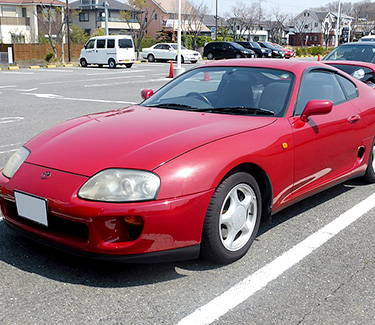
Toyota Supra
In 1993, Toyota introduced the JZA80 version of the Supra. This model was available with two engines: A 2JZ-GE 3.0 liter inline-6 engine which could produce up to 220 HP and 210 lb/ft of torque, and A 2JZ-GTE twin-turbo inline-6 engine (Japanese models could produce up to 276 HP and 318 lb/ft of torque while North American and European models could produce up to 320 HP and 315 lb/ft of torque)
It is worth noting that the models sold in North American and Europe had larger fuel injectors and smaller turbochargers. They were available in a Getrag V160 6-speed manual transmission for turbo models, a W58 5-speed manual transmission for non-turbo models, and a A340E 4-speed automatic with manual shift mode. Non-turbo units also had 16" 5-spoke aluminum alloy wheels, while the turbo units had a 17” version of those wheels.
The Supra went through several facelifts. For instance, in 1997, Toyota modified its tail lights, headlights, wheels, front bumper, and interior design. Moreover, the turbo models came with Limited Edition 15th Anniversary" badges. The Japanese automaker also made some minor changes to the engine, until it discontinued the model in the US market in 1998. That said, Toyota continued to manufacture the JZA80 Supra until 2002.
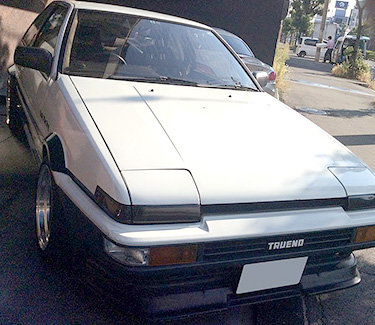
Toyota AE86
Those who do not have ample knowledge about JDM imports may think that the Toyota AE86 is just a generic Japanese vehicle from the 80s. This may be true when the model was released decades ago. However, the Toyota AE86 has gone through several changes, making it altogether more interesting.
Its 1.6-liter inline-4 engine can produce up to 123 HP. That may seem slow for those with a ‘need for speed’. However, it feels sprightly when you drive it. After all, it weighs less than a ton. The engine can spin up to the 7600 RPM red line. Once you reach that, you will find that the gearbox is adequately precise. Even without power assistance, the steering can be a pleasure to use. One of the downsides though is how the AE86 awkwardly rolls into some corners. A spinning rear wheel can occasionally hamper your quick exit, especially since this model does not have the optional LSD.
Overall, the Toyota AE86 is an excellent vehicle. Its classic RWD balance and elegant, mechanical simplicity have made it attractive to drifting enthusiasts. While it may not be able to compete with modern sportscars in some aspects, it can still teach them a thing or two about handling.
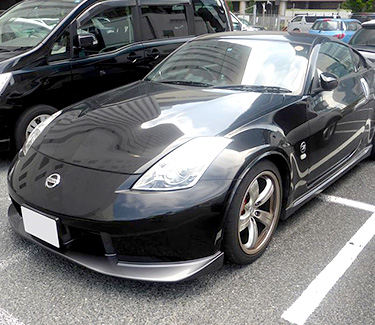
Nissan Fairlady Z
Introduced in 2002, the Z33 variant of the Fairlady Z initially had a coupe body style. It has the same 3.5-liter VQ35DE V6 engine used in the Altima, Skyline V35, Pathfinder, and Maxima. However, Fairlady Z’s had been modified to produce up to 276 HP and 274 lb/ft of torque. Moreover, its 350Z variant can render up to 287 HP. It was available in 5-speed automatic transmission and 6-speed manual transmission versions.
The first Z model was available in various trim lines, including the base model, Version S, Version T, and Version ST. The trim lines for the 350Z were more diverse. They included the base model, Enthusiast, Touring, Performance, and Track models. Enthusiast units came with features like traction control, cruise control, and VLSD. Performance models, on the other hand, had a rear spoiler 18” wheels, a front air dam, and VDC. Nissan added heated leather seats and xenon headlights to the standard features of the Touring models. Track units had Brembo brakes, traction control, and a rear spoiler as standard features.
Over the years, the Nissan Fairlady Z went through various upgrades, winning several recognitions. Some of the awards it received included TopSpeed Magazine’s Japanese Performance Car of the Year (2007) and Edmunds.com’s Editor’s Most Wanted (2003).
Popular JDMs Imported from Japan | Customer's Voice
Japanese vehicles have been known to be some of the most reliable on the road. Because of the stringent tests that the government imposes, you can only expect high quality from JDM cars. Even as used vehicles, Japanese cars usually have an overall immaculate condition. That said, when purchasing JDM imports, you should only trust the experts in the industry. After all, there are many dodgy used car dealers online that are just out to rip you off.
Here at Carused.jp, we ensure that we advertise the exact conditions of the used cars we feature. All the vehicles in our catalog and auctions have been professionally inspected by an expert. We have been in the industry for over a decade, and we work harder each day to help our customers find the vehicles they need in the best condition possible. You do not have to take our word for it. Just look at what our previous clients have to say about our services:


